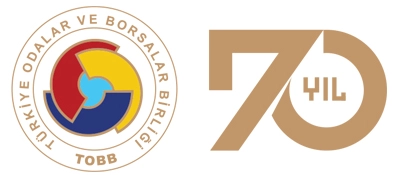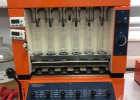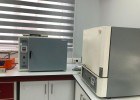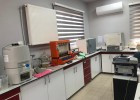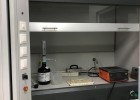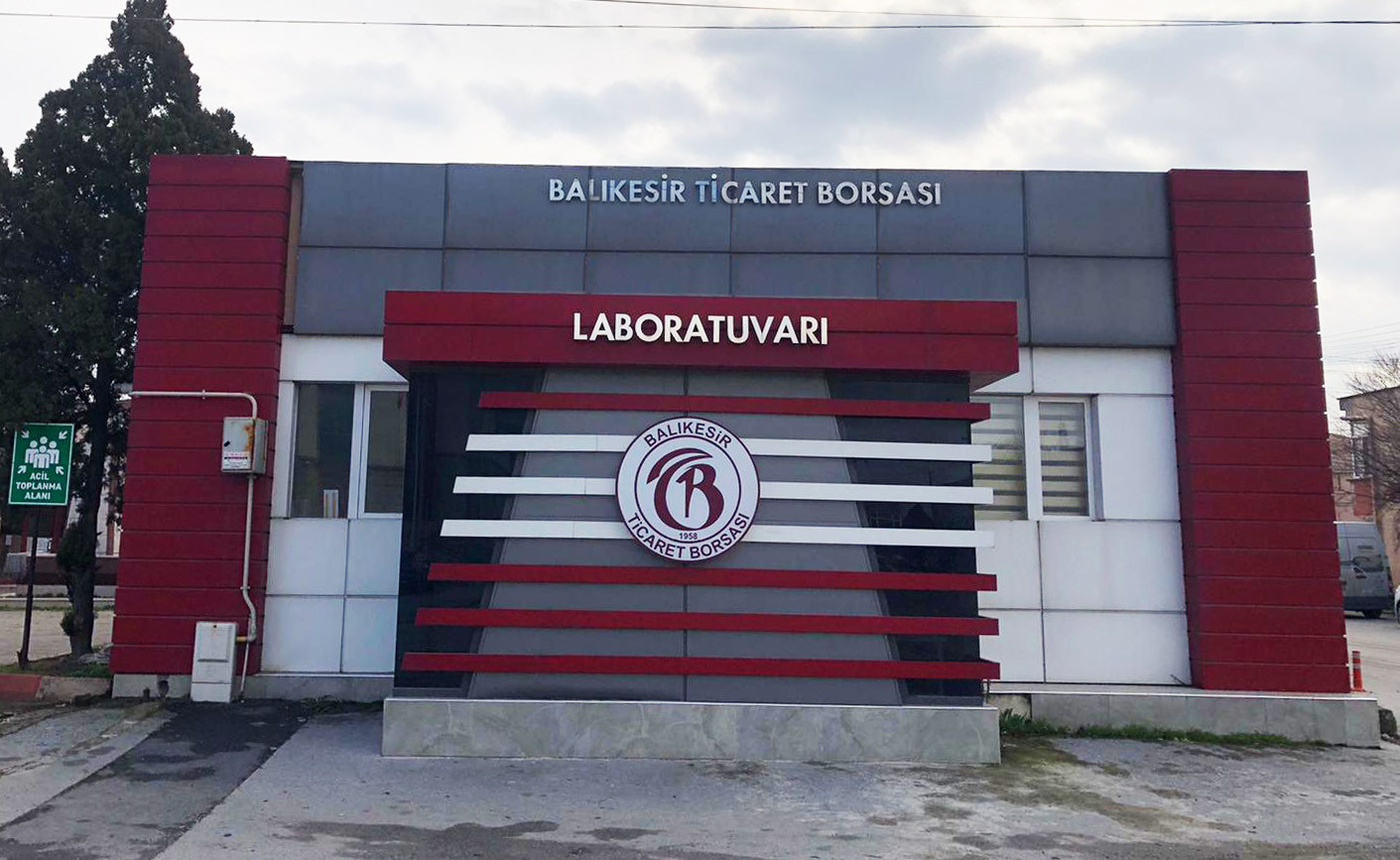
Analyzes Made in Our Laboratory
In the Food Laboratory under the Balıkesir Commodity Exchange Agricultural and Animal Products Economic Enterprise; Quality control analyzes of grain, grain products, feed and feed raw materials are carried out. In the food laboratory established with the best and most modern devices, the aim of our Exchange is; to improve the quality of producers 'and farmers' products and to contribute to their development. In our laboratory established in this context:
Wheat: Moisture, Hectoliter Weight, Gluten, Gluten Index, Sedimentation Determination, Delayed Sedimentation Determination
Flour: Moisture, Gluten, Gluten Index, Sedimentation Determination, Delayed Sedimentation, Protein, Ash
In Cereals: Hectoliter Weight, Moisture
Feed and Feed Raw Material: Protein, Cellulose, Starch, Hectolitre Weight, Ash and Moisture
HECTOLITER WEIGHT DETERMINATION
It is the kilogram weight of 100 liters. It covers the determination of flour yields of cereals (Wheat, Barley, etc.) through hectoliters. As the hectoliter increases, the flour yield of wheat increases. In general, the grains with small, long, thick crusts and deep abdominal cavities have a low hectolitre weight.
MOISTURE
It is the ratio of water contained in the product. The amount of moisture is more important for trade, storage and milling. Moisture rate is of great importance in maintaining the quality of the product. It is easier for products with high humidity to get hot, mold, germinate and be attacked by insects. Storage becomes difficult, the technological value of the product drops significantly.
GLUTEN (AGE SELF%) AND GLUTEN INDEX
Gluten is a protein specific to wheat only. When it comes to fermented bakery products, the amount and quality of wet gluten are very important quality criteria. The wet essence holds the gas created by the yeast, allowing the volume of the bread to occur.
Gluten index value is one of the methods used to determine wet core quality. This value is the measure of the strength of the flour.
SEDIMENTATION AND DELAYED SEDIMENTATION VALUE ASSESSMENT
It is the fastest and easiest of various tests to determine the bread quality of wheat flour. By interpreting the number obtained as a result of this test, important information about the quality and structure of the bread to be made from that wheat flour is obtained.
Delayed Sedimentation; It is a method used to determine wheat damaged by sunflower or flour obtained from them. If a value lower than the normal sedimentation value is obtained, there may be sun damage.
ASH DETERMINATION
In cereals and feeds, ash is the residue formed by mineral substances left behind by burning.
Ash content is an important quality criterion for flour. The high amount of ash indicates that the flour has high efficiency.
The raw ash content of the feed and feed raw materials as a result of the analysis will contain natural inorganic substances in the feed, as well as materials such as dust, soil, sand that are mixed with the feed later.
Ash analysis can provide information in terms of nutritional value to control the compliance of the samples with the standards.
PROTEIN DETERMINATION
The most effective chemical data for determining the purpose of using a wheat is the amount of protein. It is the most important criterion that is taken into account in the production of wheat batter in order to provide the desired amounts in the flour to be produced according to the purpose of use (For example, the production of bread, biscuit, cake-blended flour)
It determines the amount of protein in feed and feed raw materials, provides information in terms of the control of the conformity of the product to the standards and nutritional value.
STARCH DETERMINATION
It is used in determination of carbohydrates such as starch in feed and feed raw materials by polarimetric method and gives information in terms of nutritional value. It is especially helpful in classifying bran, bonquality and razmol.
CELLULOSE DETERMINATION
It determines the amount of cellulose in feed and feed raw materials, provides information about the control of the conformity of the product to the standards and nutritional value.
DEVICE LIST AND QTY
|
GLUTEN WASHING DEVICE: It is used to determine the amount of gluten in flour and ground wheat. Analyzes two separate samples in 10 minutes. Gluten washing device is suitable for general gluten washing procedure and works fully automatically. The device has two washing heads, right and left, and has the ability to wash two different samples at the same time. The device performs 20 seconds of kneading and 280 seconds of washing in the general gluten washing procedure and gives the result of the sample after a total of 5 minutes and warns the user with a signal sound. |
1 |
|
GLUTEN CENTRIFUGAL DEVICE: It is used to determine the gluten quality (index) in flour and ground wheat. Thanks to its index value, it enables wheat to be classified as weak, medium and strong. Gluten obtained from the gluten washing device should be placed in the Gluten centrifuge within 30 seconds. The device performs 6000 rpm for 1 minute and provides separation according to gluten bonds. It takes about 7 - 8 minutes to determine both the wet essence amount and the gluten index value in wheat crushing. |
1 |
|
LABORATORY TYPE FLOUR MILL The physical measurements used in determining the quality of wheat are simple to make and, to some extent, are helpful in determining the milling ability of wheat and the bread ability of flour. The grinding ability of the wheat can be determined directly in special laboratory mills. |
1 |
|
SEDIMENTATION DEVICE: It is an important method that provides information about the gluten quality of wheat. Sedimentation value varies according to the grinding technique. Delayed sedimentation test is a method used to determine wheat damaged wheat or flour obtained from them. |
1 |
|
HECTOLITER DEVICE: Hectoliter weight measurement in wheat is a method used all over the world for raw material purchasing and calculating the flour yield. In addition to wheat, corn, oats, paddy, rice, lentil…. etc. It is used to measure the hectoliter in cereals. 1 lt. 5000g which can measure the weight of cereals in volume. capacity, 1 g precision laboratory scale with electronic digital display. In the form of a cylinder 1 lt. measuring cup. Sample smoothing apparatus. |
1 |
|
HUMIDITY DEVICE: HE 50 HUMIDITY DEVICE Measuring Method: Measuring Cell: |
1 |
|
SCALE (accurate to 0.01 g) SARTORIUS |
1 |
|
ASH FURNACE PROTHERM |
1 |
|
ANALYTICAL SCALE PRECİSA 205A SCS |
1 |
|
NITROGEN PROTEIN DETECTION DEVICE: FOSS TECATOR Determines Nitrogen-Protein Amount. Distillation system Automatic distillation system. It performs sample dilution, collection solution, alkali addition, distillation, tube emptying functions fully automatic. Burning system 6 pieces of 250 ml. Possibility of burning the incinerator at the same time. Electronic temperature control |
1 |
|
PURE WATER DEVICE: THERMO SCIENTIFIC BARNSTEAD PACIFIC-T II |
1 |
|
FAST MOISTURE TEST DEVICE OHAUS MB45 It is used for moisture determination. Possibility to enter 50 user methods,% moisture,% dry matter, remaining dry matter weight measurement amount, drying according to product type |
1 |
|
ETÜV: THERMAL It is used in multi-purpose heating and drying processes. |
1 |
|
POLARIMETER: CETI It is used in determination of carbohydrates such as starch in cereals by polarimetric method. It is used to calculate concentrations of optically active sample solutions. |
1 |
|
GRINDER Shred samples to size for processing |
1 |
|
WATER BATH GFL 1031/1032 |
1 |
|
CELLULOSE DETERMINATION DEVICE FOSS TECATOR FIBERTEC M6 Hot separation unit Cold separation unit |
1 |
| ELECTRIC DOUBLE COOKER |
BALIKESİR COMMODITY EXCHANGE ANALYSIS AND FEES OF AGRICULTURAL AND ANIMAL PRODUCTS ECONOMIC MANAGEMENT LABORATORY
| HECTOLITER | 1,00 TL. |
| DETERMINATION OF HUMIDITY | 1,00 TL. |
| GLUTEN (AGE SELF%) AND GLUTEN INDEX | 2,50 TL. |
| SEDIMENTATION | 2,50 TL. |
| MOISTURE-GLUTEN-SEDIMENTATION (PACKAGE) | 3,50 TL |
| ASH DETERMINATION | 2,50 TL. |
| PROTEIN DETERMINATION | 10,00 TL. |
| STARCH DETERMINATION | 2,50 TL. |
| CELLULOSE DETERMINATION | 2,50 TL. |
NOTE: 18% VAT WILL BE ADDED TO THE ABOVE FEES.




